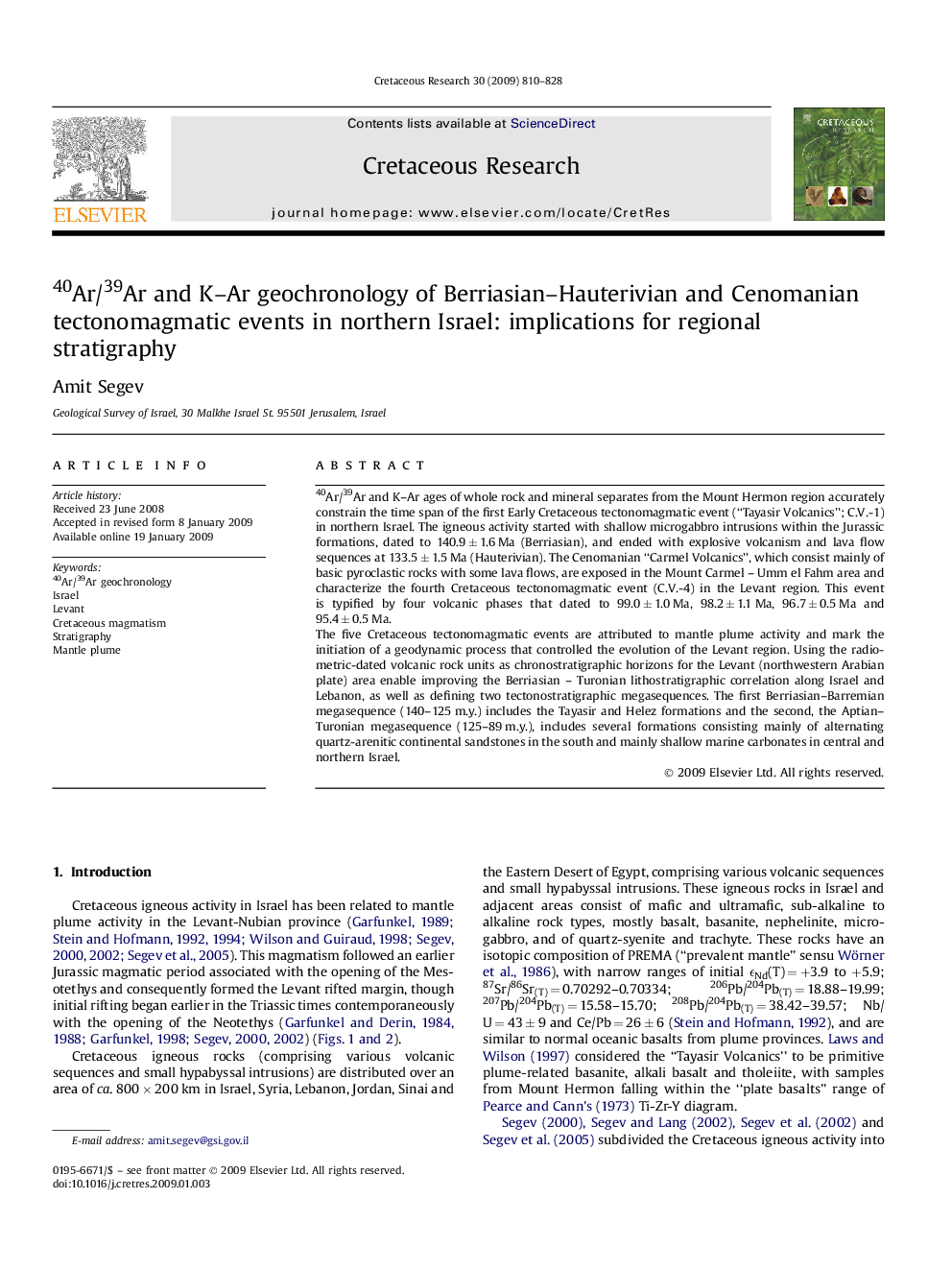| Article ID | Journal | Published Year | Pages | File Type |
|---|---|---|---|---|
| 4747544 | Cretaceous Research | 2009 | 19 Pages |
40Ar/39Ar and K–Ar ages of whole rock and mineral separates from the Mount Hermon region accurately constrain the time span of the first Early Cretaceous tectonomagmatic event (“Tayasir Volcanics”; C.V.-1) in northern Israel. The igneous activity started with shallow microgabbro intrusions within the Jurassic formations, dated to 140.9 ± 1.6 Ma (Berriasian), and ended with explosive volcanism and lava flow sequences at 133.5 ± 1.5 Ma (Hauterivian). The Cenomanian “Carmel Volcanics”, which consist mainly of basic pyroclastic rocks with some lava flows, are exposed in the Mount Carmel – Umm el Fahm area and characterize the fourth Cretaceous tectonomagmatic event (C.V.-4) in the Levant region. This event is typified by four volcanic phases that dated to 99.0 ± 1.0 Ma, 98.2 ± 1.1 Ma, 96.7 ± 0.5 Ma and 95.4 ± 0.5 Ma.The five Cretaceous tectonomagmatic events are attributed to mantle plume activity and mark the initiation of a geodynamic process that controlled the evolution of the Levant region. Using the radiometric-dated volcanic rock units as chronostratigraphic horizons for the Levant (northwestern Arabian plate) area enable improving the Berriasian – Turonian lithostratigraphic correlation along Israel and Lebanon, as well as defining two tectonostratigraphic megasequences. The first Berriasian–Barremian megasequence (140–125 m.y.) includes the Tayasir and Helez formations and the second, the Aptian–Turonian megasequence (125–89 m.y.), includes several formations consisting mainly of alternating quartz-arenitic continental sandstones in the south and mainly shallow marine carbonates in central and northern Israel.
